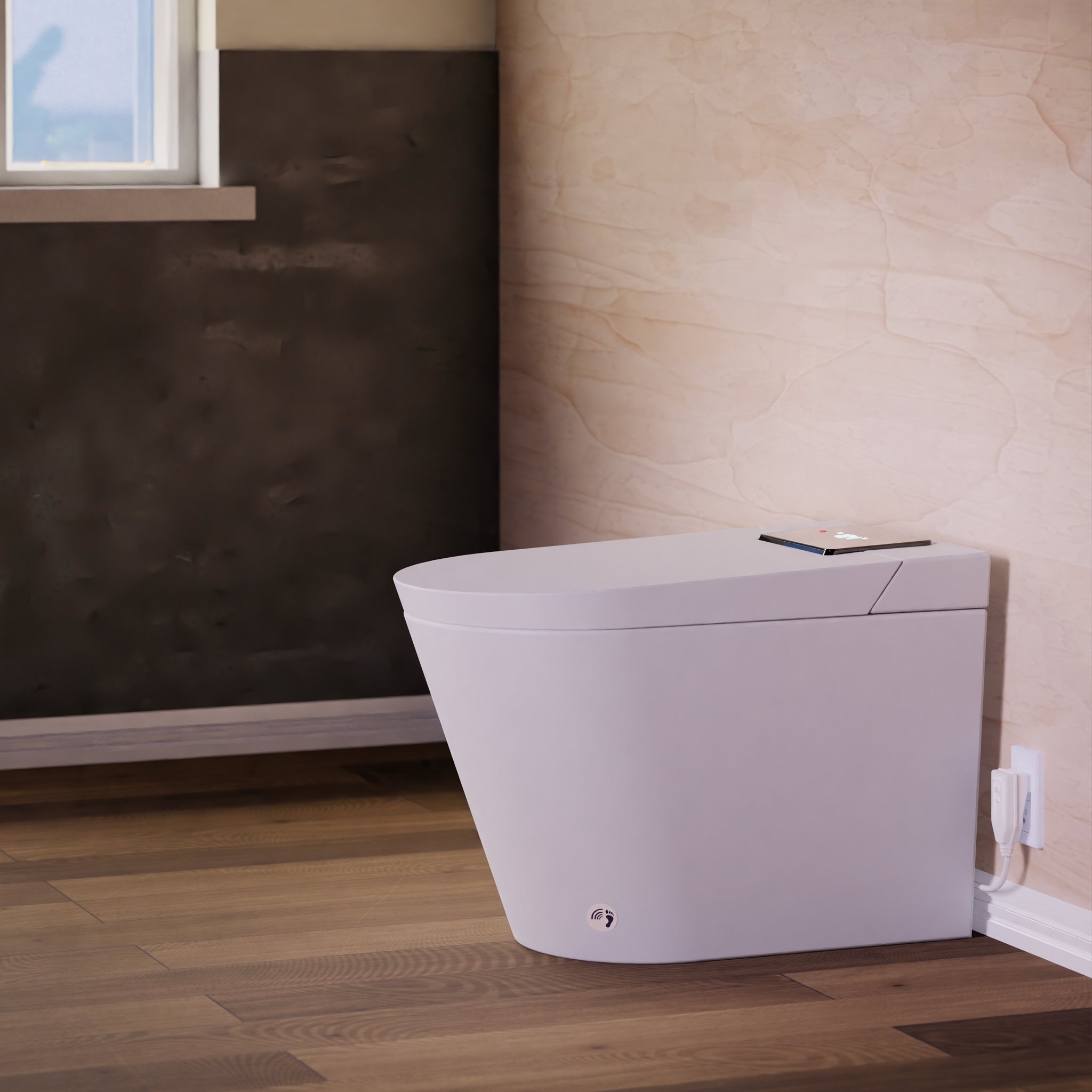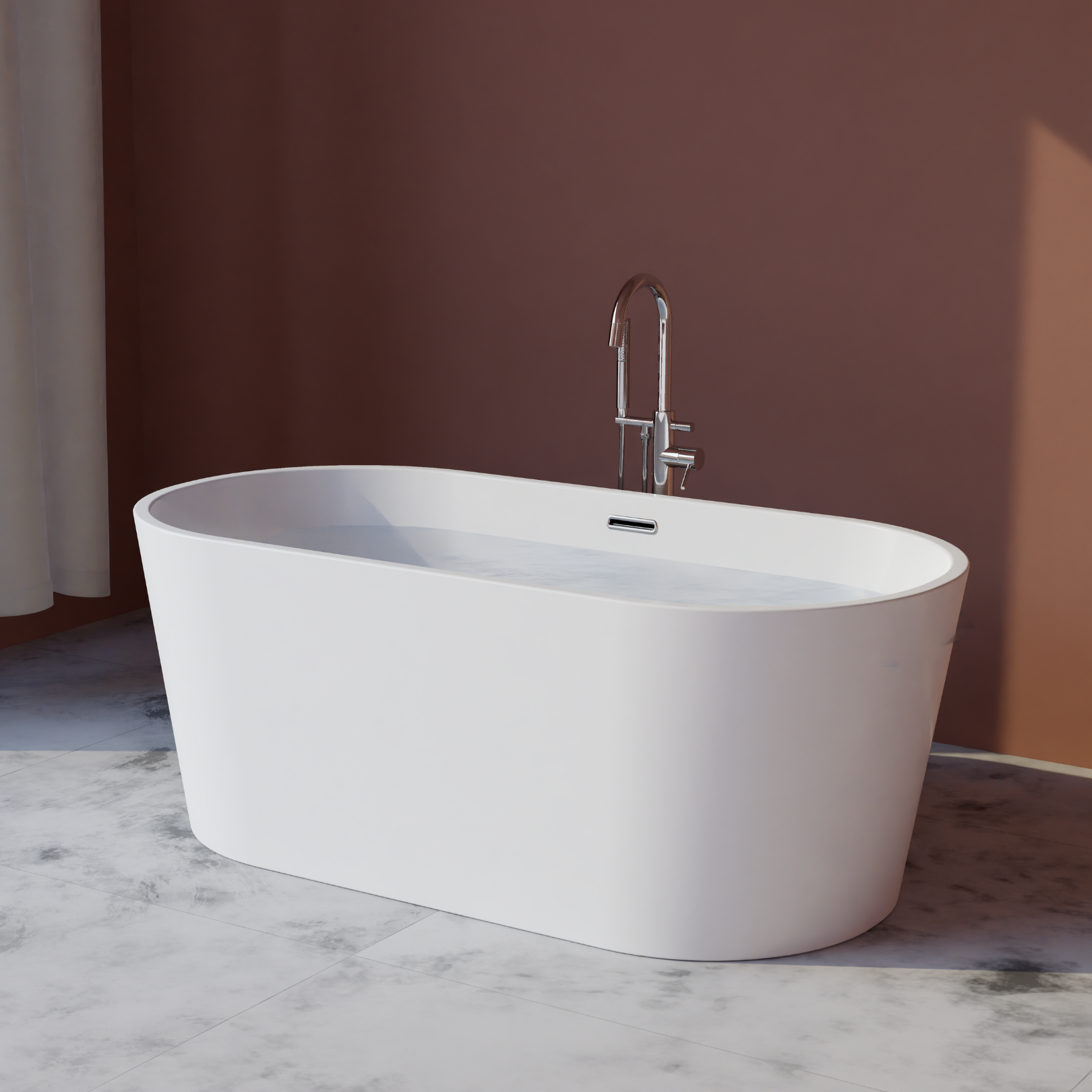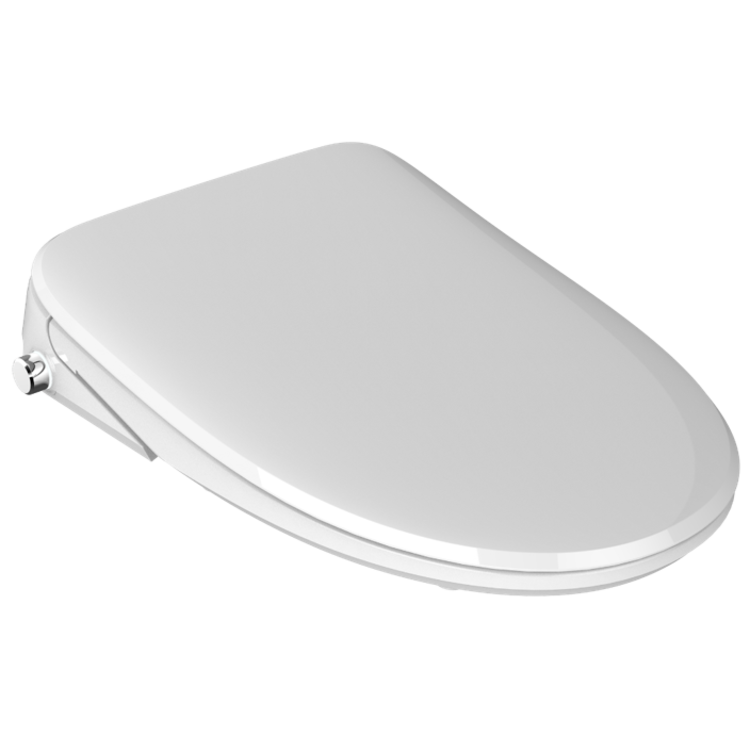Connecting Your Trone Toilet To An Outlet
Installing a Trone toilet is not as intimidating as you might think. All the extra that you need to do is ensure you correctly connect your Trone to an electrical outlet. Then you're good to go! Before starting your installation, here are the answers to some common questions.

How close does the electrical outlet need to be to the toilet?
Trone toilets are designed to provide the ultimate convenience with an included power cord (most models are 60" long, but others vary). Ensure that the outlet is close to the toilet within the measurement indicated on your toilet's specs.
What is a GFI or GFCI outlet, and should I have one to plug my bidet toilet seat into?
Trone toilets require a 115 V power GFCI (Ground Fault Circuit Interrupter) receptacle to work properly. GFCI and GFI outlets are designed to protect you from electric shock by quickly shutting off the power when it senses an imbalance in the electrical current. We highly reccomend them near areas with high moisture, such as sinks and bathrooms. Installing a GFCI outlet can help give you peace of mind when using Trone toilets.
GFI/GFCI outlets come in various sizes and shapes, so choose the right one for your Trone toilet installation. Contact an electrician or Trone tech support for help if you're unsure.
How to connect the Trone Toilet?
- Ensure that the Trone is near a wall socket with a safety grounding device and that AC 120V, 16A, and 60Hz power it.
- Insert one end of the Trone power cord into the Trone's outlet on the side of the unit.
- Plug the other end of the Trone power cord into an AC 120V, 16A, 60Hz wall socket with a safety grounding device.
- Turn on the Trone toilet power switch and test the Trone's functionality to make sure it is working properly.
Following the steps outlined, you can easily and safely connect your Trone Electronic Toilet to an outlet.



